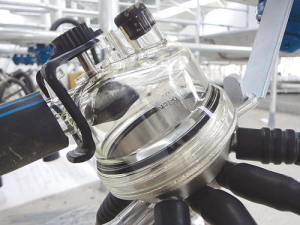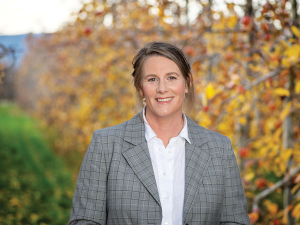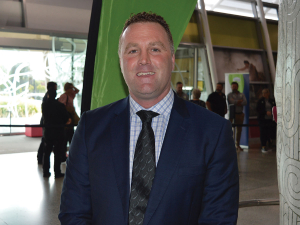It may sound unlikely, but with a simple decision, you can. All you have to do is replace your milking liners once they reach their use-by date of 2500 milkings.
This can have an immediate, positive effect on two of the most important components of any dairy business, because fast, efficient milk harvesting puts less stress on cows and staff (not to mention milking plant).
Replacing worn-out liners at the right time is also a financial win, because it helps improve overall milk quality. That in turn is a key indicator for several critical areas of farm business performance, including animal health and labour.
As a rule, the lower your somatic cell count (SCC) and the fewer grades you incur during lactation, the better your milking systems.
Farmers who have replaced liners during the season, instead of milking through with the same set from start to finish of the lactation, say they didn’t realise what they were missing out on until they made the change. They report immediate reduction in teat end damage as well as better SCC results and faster milk-out.
In some large herd operations, liners reach the end of their 2500 milking lifespan and are changed as often as every two months as normal practice to protect milk quality. That might seem excessive, but when you look at the statistics you see those properties are simply following best practice based on average liner changes.
In general, many New Zealand dairy farmers expect their liners to last for about 4900 milkings -- nearly twice their effective lifetime. That’s like expecting the average cow to milk well for 20 years.
Changing milking liners once they reach their use-by date not only shortens milk-out time, reduces cup slip and lowers somatic cell counts, it also helps save power, labour and animal health costs and can increase milk solids yield while minimising the risk of costly grades.
Now is an ideal time to review and if necessary fine-tune your milking system by asking three questions:
1. When were the milking liners last changed?
2. What is the correct milking liner for your shells, and are you using the best liner?
3. Do you have milking problems in the plant (cup slip, etc.)?
Milking liners are the single part of your dairy plant that comes into direct contact with the cow.
Every lactation she typically spends 50-100 hours attached to the machine – via those liners – so it’s no wonder they play such an important role in milk harvesting.
Most dairy rubberware is designed to take a lot of punishment. As soon as it is installed in your plant, its surface strength and integrity comes under daily attack from a wide range of environmental challenges, including milk, detergents, sanitisers, milkstone removers, ozone, UV light and variable temperatures.
And on top of that, the average liner expands and contracts over two million times during its working life.
Perry Davis, Skellerup national manager, says cows are the first to know when milking liners need changing, and they have their own ways of letting farmers know.
“Liners are hidden inside the cups, so you can’t see what happens to them when they wear out. The first thing you might see instead is a cow kicking the cluster off, damaged teat ends or a surprisingly high BMSCC on the milk docket. Another very common sign is when cups start falling off cows during milking.”
A good liner, well-fitted, will completely milk out a cow quickly and efficiently.
It doesn’t slip and it leaves the teats looking very similar in size and colour to how they looked before milking.
“A badly fitting over-used liner is just the opposite,” Davis says. “It could leave milk in the udder, slip off the teat and/or leave noticeable rings at the top of the teat. Permanent teat damage is not only possible but common.”
After 2500 milkings, the rubber that makes up the milking liner begins to lose its natural qualities and can become become cracked, swollen or caked with mineral build-up.
It’s uncomfortable for the cow and creates an ideal environment for bacteria.
Davis says the old myth that replacement heifers should be trained on old milking liners at the start of the season is also past its use-by date.
“The reasoning behind it is that they are supposedly softer than new ones, and if the heifers kick them off they won’t damage new equipment. But in fact the opposite is true: old liners are not softer at all, they have a rougher inner surface.
“Any cow or heifer kicking off liners old or new usually has a good reason, such as discomfort, stray voltage in the dairy or inexperienced or rough operators.”
How it works
Here’s an example of how to work out how many days remain until milking liners should be changed for maximum benefit:
Step one: multiply the number of cows being milked by the number of milkings per day.
Step two: divide the number in ‘step one’ by the number of milking clusters in the milking plant.
Step three: divide 2500 by the number in ‘step two’. This is the number of days between optimum liner changes.
For 750 cows, milked twice a day in a 60-bail rotary plant, each cluster is milking 25 cows per day. Divide 2500 by 25 and the answer is 100 days. This farm should change liners every 100 days (see www.2500change.co.nz for the easy-to-use online calculator)
• This article first appeared in Getting the Basics Right 2019 issue.










